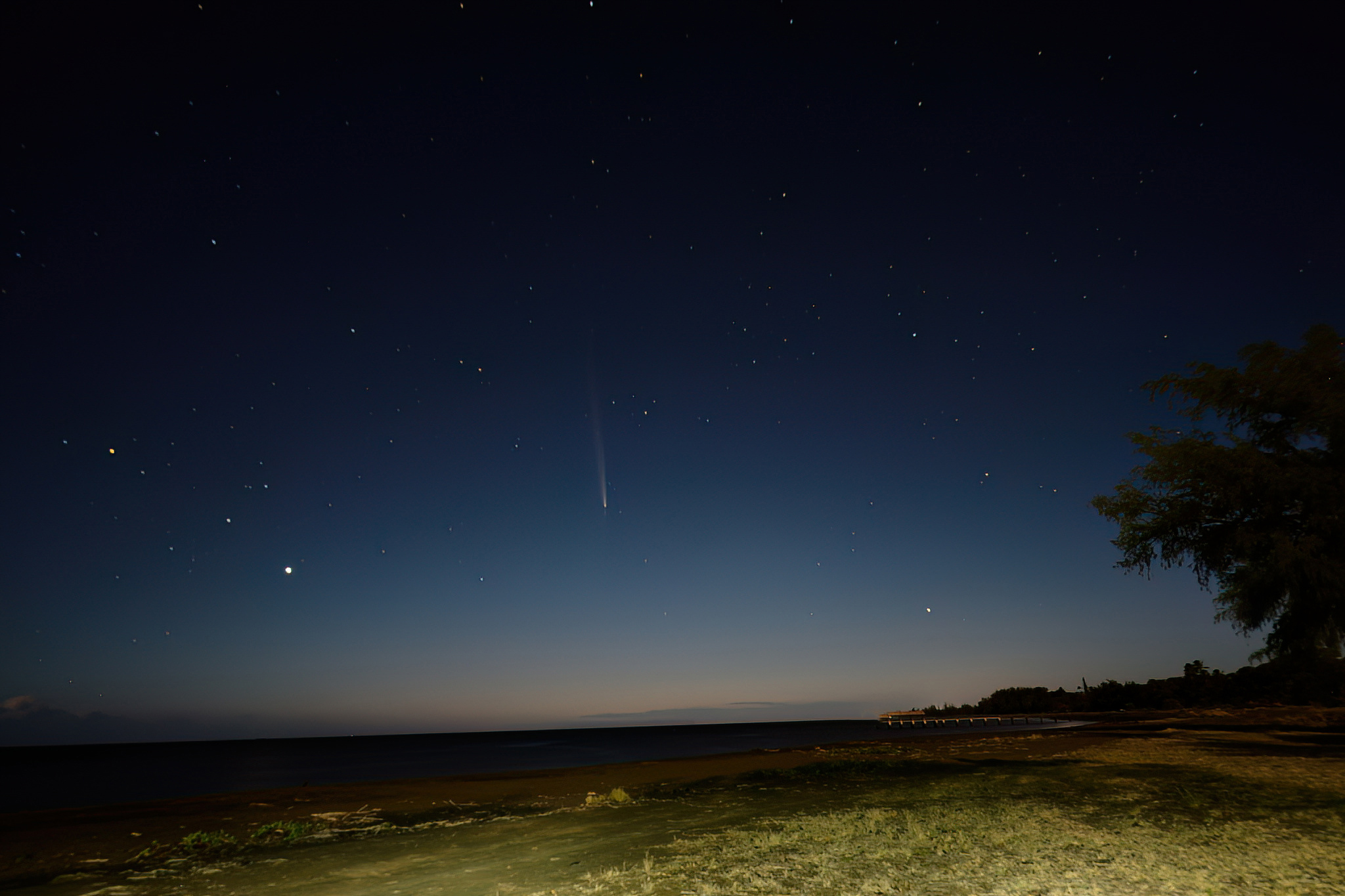Comet Tsuchinshan-ATLAS is a surprise visitor to heavenly sky above Earth. It was discovered in 2023 by observers in China’s Tsuchinshan “Purple Mountain” operation and South Africa’s Asteroid Terrestrial-impact Last Alert System (ATLAS). Thus the name.
Linda and my neighbor Jack decided to take in a flyby of Tsuchinshan-ATLAS from the front yard of our home in Waimea Kauai.
Luckily our home is located on the oceanfront on the south-west of the island. So if the skies were clear we would be able to observe it about 40-45 minutes after sunset. There was one possible problem impeding a successful viewing. The moon. The moon was rising at 93% Waxing (i.e., Full) into view at the same time as the comet. The implication, is that the comet might possibly not be visible.

The Comet Tsuchinshan-ATLAS as seen from Waimea, Kauai Hawaii U.S.A.
Luckily the comet was visible and I captured the shot above.
For you Night Sky and Stargazer types… In the image… the planet Venus is located on lower left center… the Constellation Scorpius is located to the upper left of Venus. The bright orange light in Scorpius is Antares. On the upper right is the Constellation Hercules. Way way lower to the right is Waimea Beach Public Pier which Linda and the Border Collies (BC’s) pass by each day at dawn. The BC’s often get a second session with me later in the day.
*** Jeff’s Thought’s and Other Worthless Trivia ***
I have been intrigued by how, and how well, objects from outer space are tracked. A link related to the subject is located [here].
As for Comet Tsuchinshan-ATLAS… we did not know about it until a year ago. Calculations about where it came from and would go after the Earth Flyby have been updated as more information became available.
There was a good chance that Comet Tsuchinshan-ATLAS would not stop by for a visit – given many comet’s are obliterated as they pass by our sun. Comet Tsuchinshan-ATLAS survived that endeavor.
And a return date? As late as this week, experts project Comet Tsuchinshan-ATLAS came from the outer reaches of the milky way galaxy (ours) and will return in 80,000 years. An update was just made by the experts, and Comet Tsuchinshan-ATLAS is likely to leave our galaxy. I do have a question on the exit prediction. Who will be around to perform the Fact Checking as it relates to the Return Date?
The image was captured using a Nikon Z9 camera and Nikkor 20MM (1.8) lens. I captured the image using a manually controlled configuration. Focus: Manual (just short of infinity) ISO: 500, Time Lapse: 25 seconds. Aperture: f4.
The manual shooting is my usual method for capturing images. However the moon at 93% waxing and shining in the direction of the comet (over my right shoulder) forced immediate improvisation.
Amazing it looks almost as big as Haileys comet.
Below is a link to an article on comets and greatness in recent times.
https://www.skyatnightmagazine.com/space-science/greatest-comets-of-recent-times.